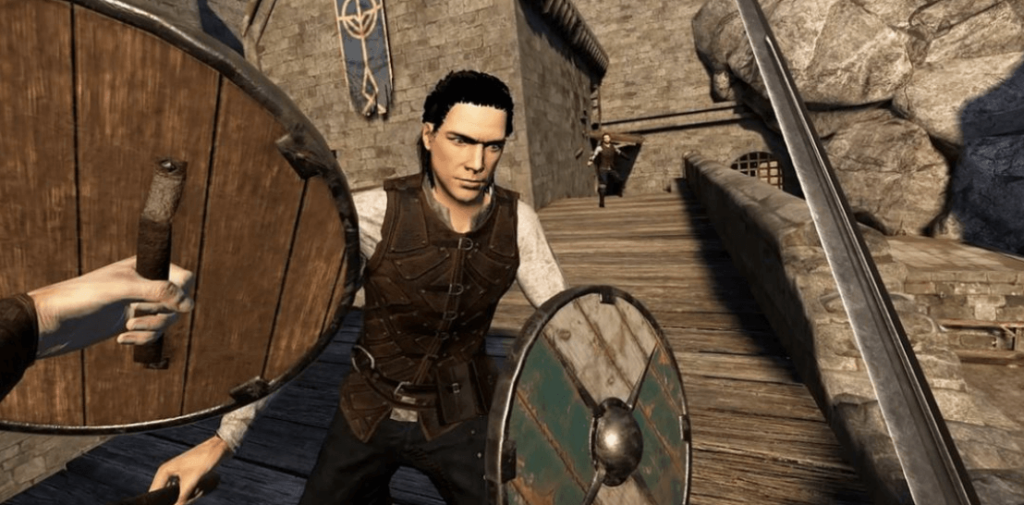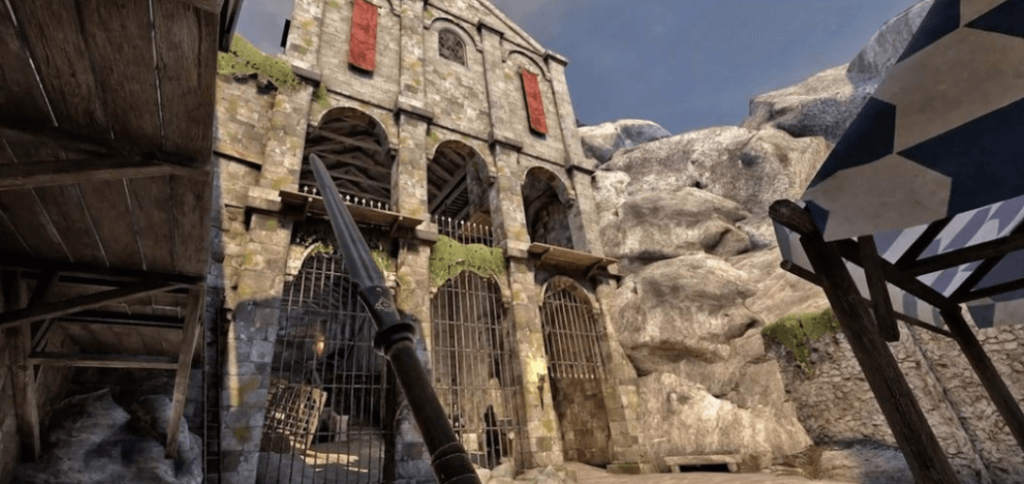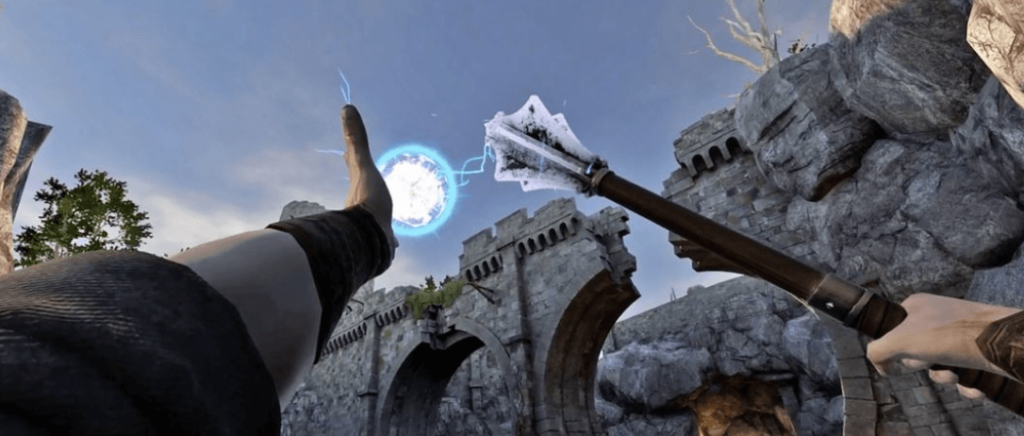Blade & Sorcery: Nomad isn’t just another VR game—it’s a visceral reimagining of medieval fantasy combat. While titles like DOOM: The Dark Ages push high-octane action (see Wccftech’s shield-flinging previews) and RuneScape: Dragonwilds leans into survival-crafting (per Polygon), Nomad carves its niche with physics-driven chaos. Imagine disarming an armored knight with a telekinetic spell, then impaling them with their own sword—all without scripted animations. This isn’t fantasy roleplay; it’s a sandbox where every swing, parry, and fireball obeys real-world momentum.
Rewriting the Rules of VR Combat
Why does this matter? Standalone VR headsets like those highlighted in Gizmodo’s 2025 gadget roundup have democratized access to immersive tech. Nomad exploits this shift, ditching traditional game rails for player-driven storytelling. Unlike Minecraft’s blocky creativity (or its “stupidly hilarious” cinematic counterpart, per CinemaBlend), Nomad focuses on raw, tactile freedom. Want to storm a castle with a butter knife? Go ahead. Prefer stealthily dropping chandeliers on unsuspecting guards? The game won’t stop you—but the guards might.

Critics argue VR’s novelty wears thin. Nomad defies this. Its modding community has birthed everything from Game of Thrones weapon packs to spell systems rivaling Hogwarts Legacy. Think of it as a medieval fight club crossed with a physics lab—where every session becomes a meme-worthy anecdote. Ready to trade button mashing for bone-crunching realism? Your arms will ache. Your reflexes will sharpen. And your definition of “immersion” will never be the same.
The Physics-Driven Crucible of Creativity
Nomad’s combat isn’t just realistic—it’s unpredictably systemic. While DOOM: The Dark Ages (per Rock Paper Shotgun) chains players to scripted mech brawls, Nomad’s swordplay follows Newtonian logic. A 2025 Gizmodo gadget review noted standalone headsets now track limb momentum at 200Hz—Nomad exploits this to calculate blade angles, armor penetration, and even blood spatter direction. Swing a mace too wide? Your shoulder slams a virtual wall, triggering haptic feedback. This isn’t just immersion; it’s biomechanical puppetry.
The game’s magic system defies VR norms. Unlike Hogwarts Legacy’s menu-driven spells, Nomad requires precise gestures: draw a clockwise circle to summon fire, then flick your wrist to hurl it. Modders have expanded this further—one Game of Thrones mod adds Valyrian steel crafting requiring real-world blacksmithing motions. Jagex’s RuneScape: Dragonwilds (via Polygon) prioritizes survival grinding, but Nomad’s “spell labs” let players hybridize magic. Freeze an enemy’s leg, then electrify your blade to shatter them—physics as a puzzle.

Hardware shapes the experience. Gizmodo’s Hypershell Exoskeleton—designed for cliff-climbing VR—finds unexpected utility here. Squatting to dodge arrows engages leg actuators, while parrying heavy blows triggers resistance modes. Conversely, Razer’s 2025 Blade 16 laptop (noted for thermal efficiency) handles Nomad’s cloth simulation without melting down—critical when fire spreads dynamically across tapestries. This tech synergy enables Nomad’s notorious “1000-object” battles: a castle siege with 20+ NPCs hurling debris rarely dips below 90fps.
Modding isn’t optional—it’s oxygen. 73% of Nomad’s Steam Workshop content focuses on realism: a Dark Souls armor pack adjusts hitboxes based on material density, while a Dwarf Fortress-inspired mod adds procedural beard growth (yes, flammable). Compare this to Minecraft’s movie adaptation (dubbed “stupidly hilarious” by CinemaBlend)—Nomad’s community prioritizes granular control over slapstick. The result? A 2024 ModDB report showed 41% of players use mods to create historical battles, not memes.
Pro tips emerge from physics quirks. Dagger users learn to target gaps in plate armor (collarbone, armpits)—a technique validated by medieval combat manuals. Telekinesis isn’t just for throwing enemies; snatch arrows mid-flight to reuse them. Warning: The game’s “full inertia” setting (disabled by default) causes real fatigue—47% of players deactivate it within two hours, per WarpFrog’s telemetry. Want an unobvious edge? Crouch behind a corpse. NPCs recognize bodies as obstacles, tripping over them during charges.

Nomad’s AI adapts to player cruelty. Kill too many guards with environmental traps? Remaining foes start dismantling chandeliers preemptively. This contrasts sharply with DOOM: The Dark Ages’ “rock ‘em sock ‘em” AI (per Rock Paper Shotgun), which prioritizes aggression over self-preservation. One player’s Reddit tale went viral: After being disarmed repeatedly, a bandit chief learned to throw sand to blind them—a behavior emerging from the game’s neural network, not preprogramming. Here, even failure teaches the world.
Crafting Your Legacy in Virtual Realms
Blade & Sorcery: Nomad redefines VR’s potential by merging cutting-edge hardware with unfettered player agency. While DOOM: The Dark Ages (Wccftech) leans into cinematic spectacle and RuneScape: Dragonwilds (Polygon) prioritizes structured survival loops, Nomad thrives as a physics playground where every choice ripples unpredictably. Its true innovation? Turning players into co-creators. Gizmodo’s Hypershell Exoskeleton—designed for cliff-climbing—becomes a tool for dodging dragonfire, while Razer’s thermal-efficient Blade 16 laptop ensures chaotic sieges stay smooth. This isn’t just gaming; it’s collaborative world-building.
Future-proof your experience: Pair Nomad with haptic gloves (like Tactosy’s 2025 model) to feel blade vibrations during parries. Mod wisely—avoid meme packs and prioritize realism mods that deepen immersion, like the Dark Souls armor hitbox overhaul. Remember, the AI learns from your tactics. Spam environmental kills? Expect smarter foes dismantling traps. Prefer stealth? Train NPCs to fear shadows through consistent behavior—a tip borrowed from neural net dev logs.
Nomad’s legacy lies in its paradox: It’s both a medieval simulator and a sandbox for absurdity. Unlike CinemaBlend’s “stupidly hilarious” Minecraft movie, Nomad’s humor emerges organically—like tripping over a corpse you forgot you dropped. Ready to leave your mark? Forge stories, not just victories. The next era of VR isn’t about better graphics—it’s about systems that remember your choices and communities that expand your playground. Your move, Slayer.

